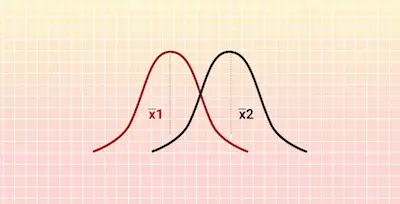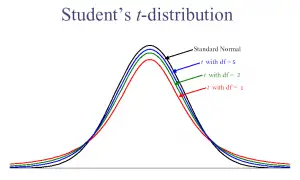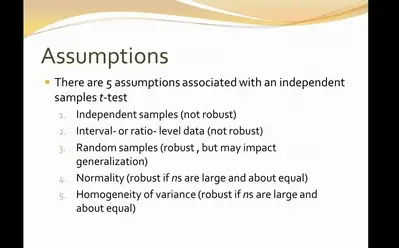When To Use A T Test?
Before we actually answer the question about when to use a t test, we believe that it is important that you know exactly what a t test is.
Discover everything you need to know about statistics.
What Is A T Test?

Simply put, a t test is a statistical test that was invented by William Sealy Gosset. This test serves to determine if two sample means (averages) or proportions are equal.
Now that you already understand what a t test is (or at least, you remembered), it is time to know when you should use it.
When To Use A T Test?
As we already mentioned, a t test is used to compare two proportions or means. So, we can then say that you can use a t test whenever you want to compare means. However, in order to use the t test, some assumptions need to b met. We will take a look at these assumptions below.

One of the things that you need to keep in mind about the t test is that it is only a good idea to use a t test when the proportions or means are good measures.
Make sure to use our student t value calculator.
Matched And Unmatched T Tests
It’s important to notice that there are two different forms of the t test: the matched t test and the unmatched t test. So, what’s the difference between the two?
In a matched t test, the two samples are not independent. Just think of the length of people’s left and right feet. These are dependent. After all, when you know the size of your left foot, you immediately know the size of your right foot.
In an unmatched t text, the two samples are independent. This is why this test is also known as the independent t test. As you can easily understand, this means that when you know something about one variable, it won’t affect the other one. For example, the heights of men and women drawn randomly from a population. The truth is that a specific height of a man doesn’t tell you anything about the height of any specific woman.
Need help to determine the student t value?
T Test: The Assumptions It Needs To Meet

As we mentioned above, to do a t test, you need to ensure that both samples are independent. Besides, one of the things that you may not know is that both types of t tests assume that the variances of the populations are always equal.
So, in case you don’t have this last criteria met, you need to know that there are different things you can do to adjust for unequal variances, provided that the sample sizes of the two samples are approximately equal.
Notice that it is possible that you have two very different variances as well as two very different sample sizes. When this happens, you shouldn’t use the t test.
Discover if you got the right t value.
So, What Do You Use?
In statistics, there are many other tests that can be performed. When you find out that it’s not appropriate to conduct a t test, then you should consider other alternative tests such as the Wilcoxon’s test or the permutation test.